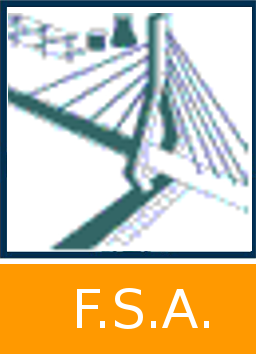Tuning damage in porous architectured materials inspired by osteonal bone
Depas, Cyrielle 
Promoteur(s) :
Ruffoni, Davide 
Date de soutenance : 24-jui-2024/25-jui-2024 • URL permanente : http://hdl.handle.net/2268.2/20404
Détails
| Titre : | Tuning damage in porous architectured materials inspired by osteonal bone |
| Titre traduit : | [fr] Réglage des dommages dans les matériaux architecturés poreux inspirés de l'os ostéonal |
| Auteur : | Depas, Cyrielle 
|
| Date de soutenance : | 24-jui-2024/25-jui-2024 |
| Promoteur(s) : | Ruffoni, Davide 
|
| Membre(s) du jury : | Zorzetto, Laura
Mertens, Anne 
Volders, Timothy 
|
| Langue : | Anglais |
| Nombre de pages : | 69 |
| Mots-clés : | [en] Bio-inspired materials [en] Damage-tolerant materials [en] Crack propagation |
| Discipline(s) : | Ingénierie, informatique & technologie > Ingénierie civile |
| Public cible : | Chercheurs Professionnels du domaine Etudiants |
| Institution(s) : | Université de Liège, Liège, Belgique |
| Diplôme : | Master en ingénieur civil biomédical, à finalité spécialisée |
| Faculté : | Mémoires de la Faculté des Sciences appliquées |
Résumé
[en] The intricate relationship between the structure, the mechanical properties and the toughening mechanisms in biological materials needs to be understood in order to develop resilient bio-inspired synthetic materials with enhanced mechanical properties.
There are many examples of biological materials around the world (e.g., bone, nacre, glass sponge, teeth), that possess different mechanisms to mitigate crack propagation. Our focus is on how a porosity pattern can influence the interaction between a weak spot and a propagating crack. In our context, we draw inspiration from the osteonal bone, which employs multiple mechanisms, potentially including porosity, to protect its weak spot (i.e., the Haversian canal containing its vascularisation).
The thesis therefore combines finite element simulations and additive manufacturing to study crack propagation and damage evolution. The simulations focus on notch sensitivity, hole attraction and the overall mechanical performance of the materials. The results reveal a complex interplay between material parameters that govern the damage initiation and evolution. In addition, incorporating a linear porosity pattern allows, depending on the features of the pattern such as pore spacing, to program the cracking behaviour by guiding cracks along predetermined paths. Although one week interface allows to deviate the crack, it does not improve the overall toughness of the system, suggesting that more weak interfaces may be combined, as seen in numerous biological materials.
To translate the computational models into physical prototypes, an additive manufacturing technique is employed, specifically PolyJet 3D printing. This method enables precise control over the microstructure and porosity of the materials, facilitating the creation of samples that closely align with the modelled designs. This experimental part thus involves designing, manufacturing and testing these samples to observe the damage evolution and fracture patterns. The results appear to corroborate the computational results.
Overall, this interdisciplinary approach, combining bio-inspiration with numerical simulations and an additive manufacturing technique, holds promise for the development of novel damage-tolerant materials for biomedical and engineering applications, motivating further research in this field.
Fichier(s)
Document(s)
Citer ce mémoire
L'Université de Liège ne garantit pas la qualité scientifique de ces travaux d'étudiants ni l'exactitude de l'ensemble des informations qu'ils contiennent.


 Master Thesis Online
Master Thesis Online



 Tous les fichiers (archive ZIP)
Tous les fichiers (archive ZIP) Master_Thesis_DEPAS_Cyrielle.pdf
Master_Thesis_DEPAS_Cyrielle.pdf

